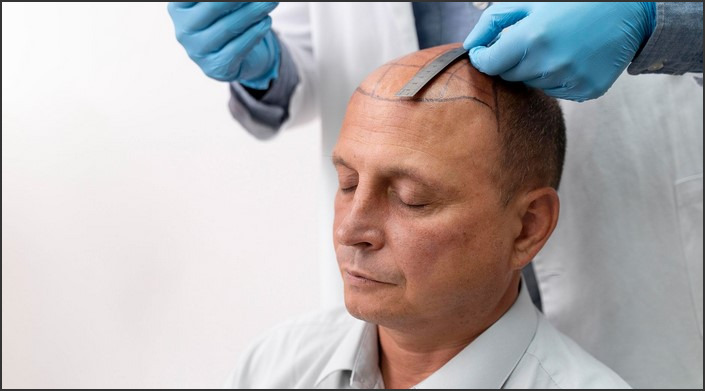Hair Transplant Cost: What to Expect for Hair Restoration

Hair transplant cost is a significant factor to consider when contemplating hair restoration procedures. The cost can vary widely depending on several factors such as the type of procedure chosen, the surgeon’s experience, the complexity of the case, and the geographical location of the clinic. It’s important to understand that hair transplant is a surgical procedure and should be viewed as an investment rather than an expense. This article will provide an overview of what to expect in terms of cost for hair restoration, helping potential patients make an informed decision.
Understanding Hair Transplant: How Much Does it Cost for Hair Restoration?
Hair transplant surgery has emerged as a popular solution for those suffering from hair loss or baldness. This surgical procedure involves transplanting hair follicles from one part of the body, typically the back or sides of the head, to the balding or thinning areas. While the effectiveness of hair transplant surgery is widely recognized, many potential patients are deterred by the perceived high cost of the procedure. However, understanding the factors that influence the cost of hair transplant surgery can help prospective patients make an informed decision.
The cost of hair transplant surgery varies significantly depending on several factors. Firstly, the extent of the patient’s hair loss plays a crucial role in determining the cost. The more extensive the hair loss, the more grafts will be required, and consequently, the higher the cost. For instance, a patient with only minor thinning may require fewer than 1,000 grafts, while a patient with significant baldness may require more than 3,000 grafts.
Secondly, the type of hair transplant procedure chosen also impacts the cost. There are two main types of hair transplant procedures: Follicular Unit Transplantation (FUT) and Follicular Unit Extraction (FUE). FUT, also known as strip harvesting, involves removing a strip of scalp from the back of the head and dividing it into individual grafts. On the other hand, FUE involves removing individual follicles directly from the scalp. FUE is typically more expensive than FUT due to its more labor-intensive nature.
Thirdly, the geographical location of the clinic and the surgeon’s experience also significantly influence the cost. Hair transplant surgery tends to be more expensive in urban areas where the cost of living is higher. Similarly, surgeons with more experience and a proven track record of successful outcomes typically charge more for their services.
Despite these variables, it’s important to note that the cost of hair transplant surgery should not be the sole factor in choosing a surgeon or clinic. The skill and experience of the surgeon, as well as the quality of the clinic’s facilities and staff, are equally, if not more, important. A cheaper procedure may end up costing more in the long run if it results in poor outcomes or complications.
On average, the cost of hair transplant surgery in the United States ranges from $4,000 to $15,000. Some clinics offer financing options or payment plans to help make the procedure more affordable. Additionally, some health insurance plans may cover part of the cost if the hair loss is due to a medical condition.
In conclusion, while the cost of hair transplant surgery can be substantial, it’s important to consider the long-term benefits. For many patients, the boost in self-confidence and improved appearance are well worth the investment. By understanding the factors that influence the cost and exploring various financing options, prospective patients can make an informed decision about whether hair transplant surgery is the right choice for them.In conclusion, the cost of a hair transplant can vary significantly depending on several factors such as the technique used, the surgeon’s experience, the extent of hair loss, and the geographical location of the clinic. It’s a considerable investment, often ranging from $4,000 to $15,000, and is usually not covered by insurance as it’s considered a cosmetic procedure. Therefore, individuals considering hair restoration should thoroughly research and consult with professionals to understand the potential costs fully.